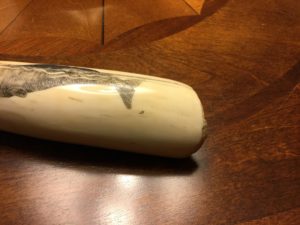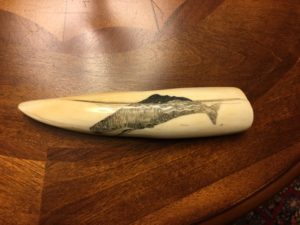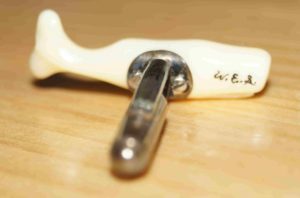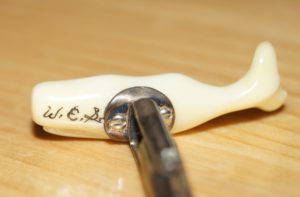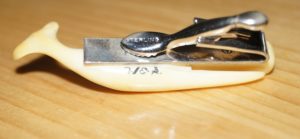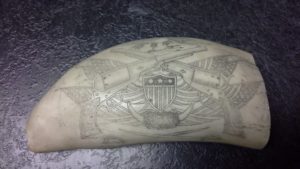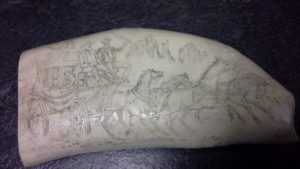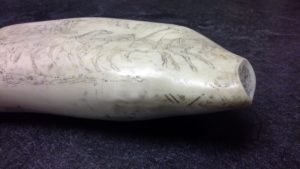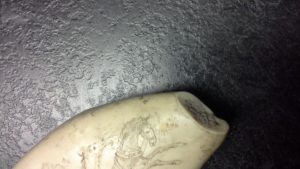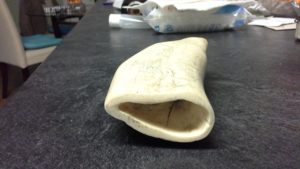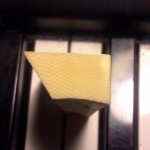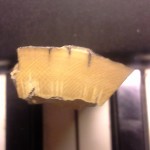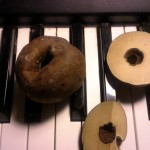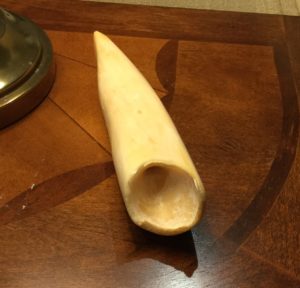
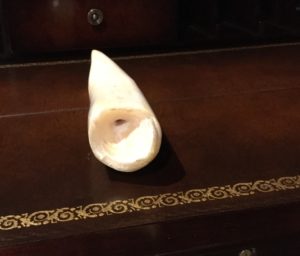
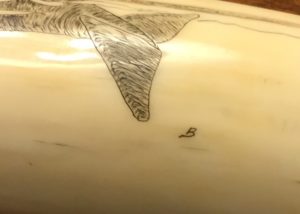 Severiano from Ohio writes: “I have had this for many years. Do you know who this artist is that signs with the letter “B” ?”
Severiano from Ohio writes: “I have had this for many years. Do you know who this artist is that signs with the letter “B” ?”
Not sure if this is a tusk tip or a whale tooth, hope to get a picture of the base. My teacher Eduardo Brum would often sign his work with a single letter B as well, though it doesn’t give us much to go on. Purchased from an antique shop on Galveston Island Texas.


